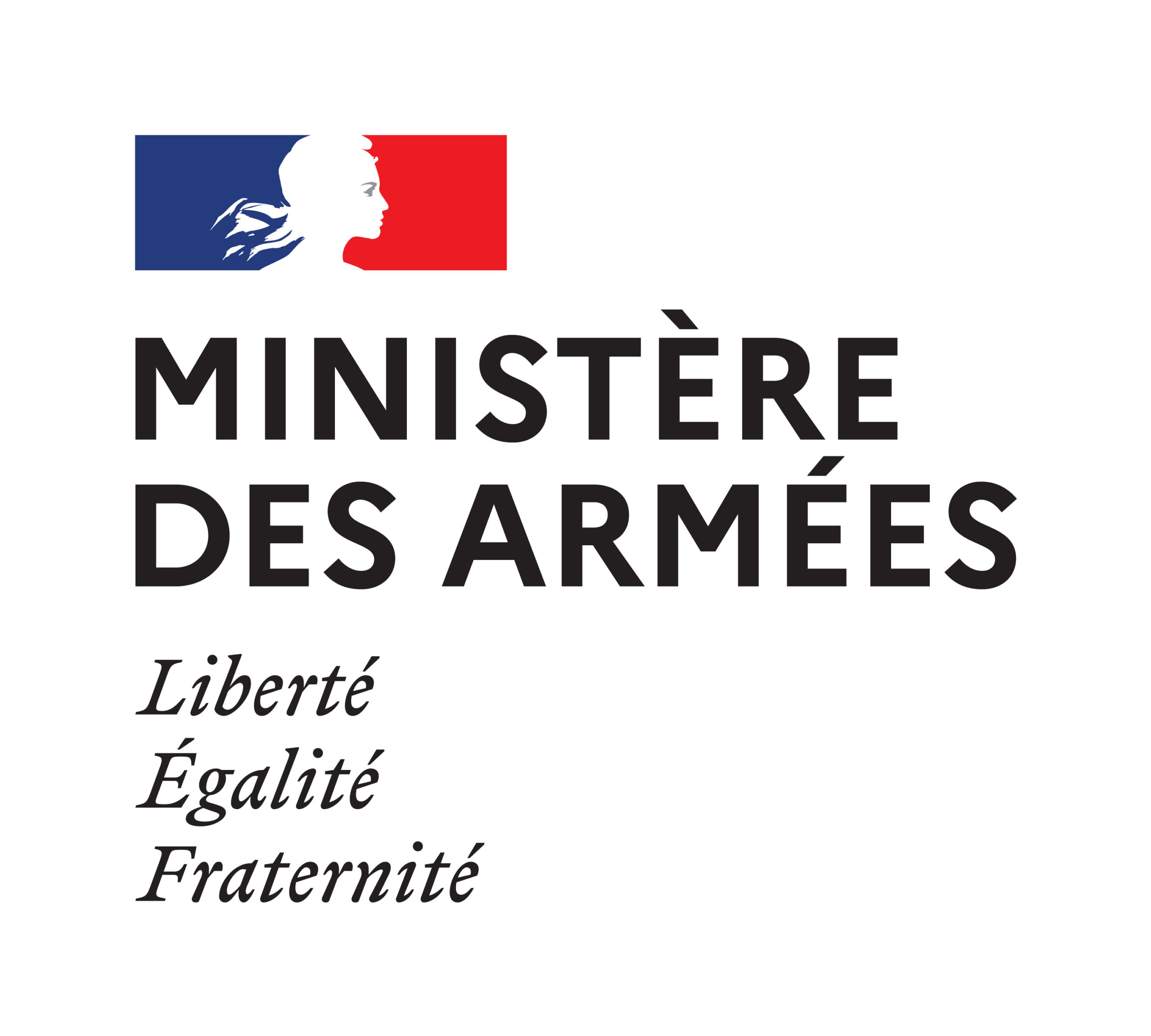FLOSSENBÜRG
Opening : may 1938
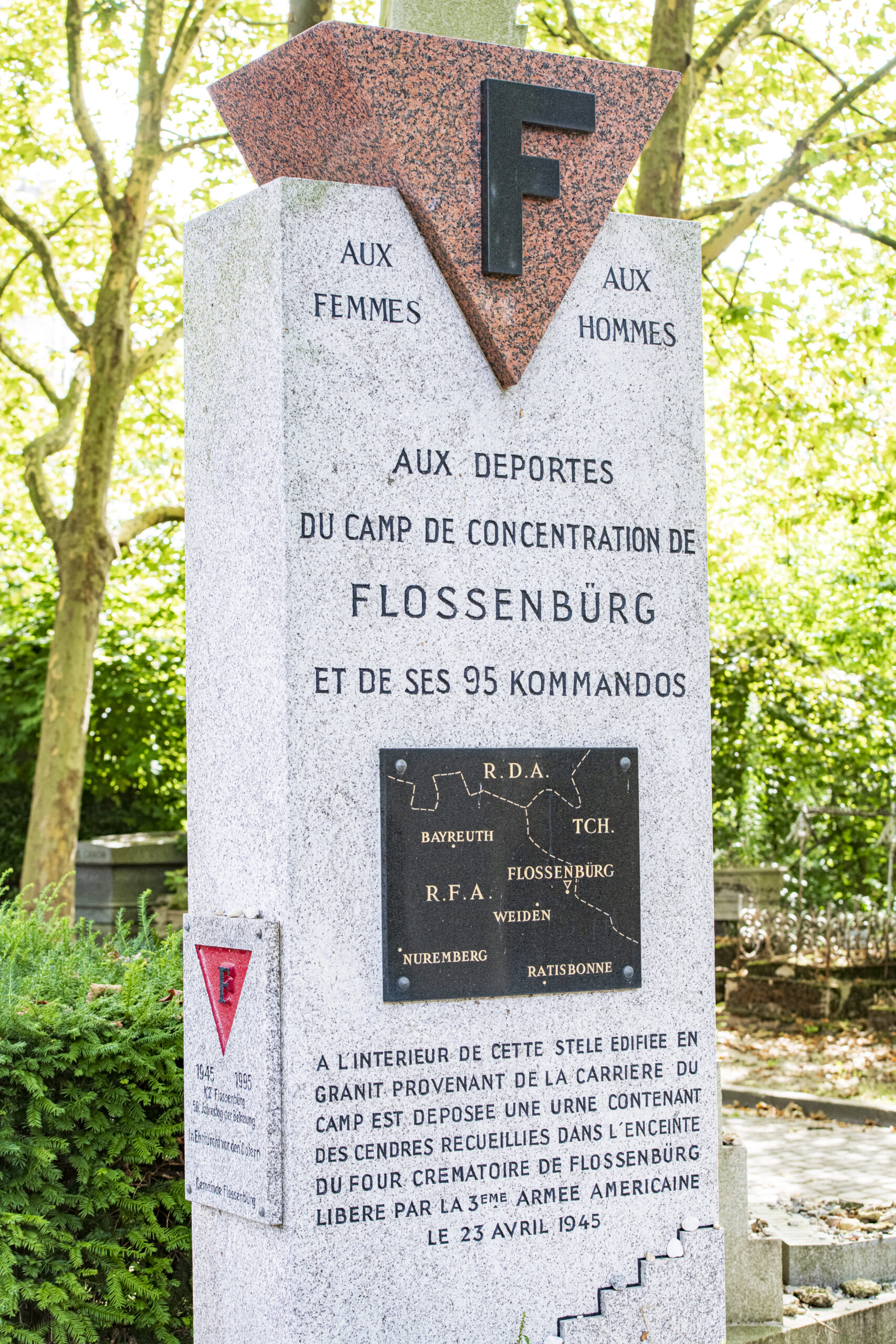
© Vincent Gerbet
Monument description
The monument was inaugurated on October 8, 1988: its base consists of a granite stele extracted from the camp quarry, laid vertically.
At the bottom of the stele, the steps of the staircase leading to the quarry are outlined.
At the top, in red granite, the triangle of political deportees with the letter F for French. At the foot, a few chaotically placed, barely cut blocks also come from the quarry.
The monument reveals the Amicale de Flossenbürg’s concern for education, with its simple design and a map showing the location of the camp. Today, however, the acronyms FRG (Federal Republic of Germany) and GDR (German Democratic Republic) are obsolete, following the fall of the Berlin Wall on November 9, 1989 and the unification treaty signed in Berlin on August 31, 1990.
On the column is engraved:
To the deportees from the
FLOSSENBÜRG CONCENTRATION CAMP
And its 95 kommandos
A plaque locates the Flossenbürg camp geographically. Below it is engraved :
Inside this stele, made of granite from the camp quarry,
is an urn containing ashes collected from the Flossenbürg crematorium,
liberated by the 3rd US Army on April 23, 1945
On the left-hand side of the column is the red triangle and is inscribed :
1945-1995
KZ Flossenbürg
50 Jahrestag der Befreiung (50e anniversaire de la libération)
In Erhfurcht vor den Opfern (en hommage aux victimes)
Gemeinde Flossenbürg (la commune de Flossenbürg)
Flossenbürg camp
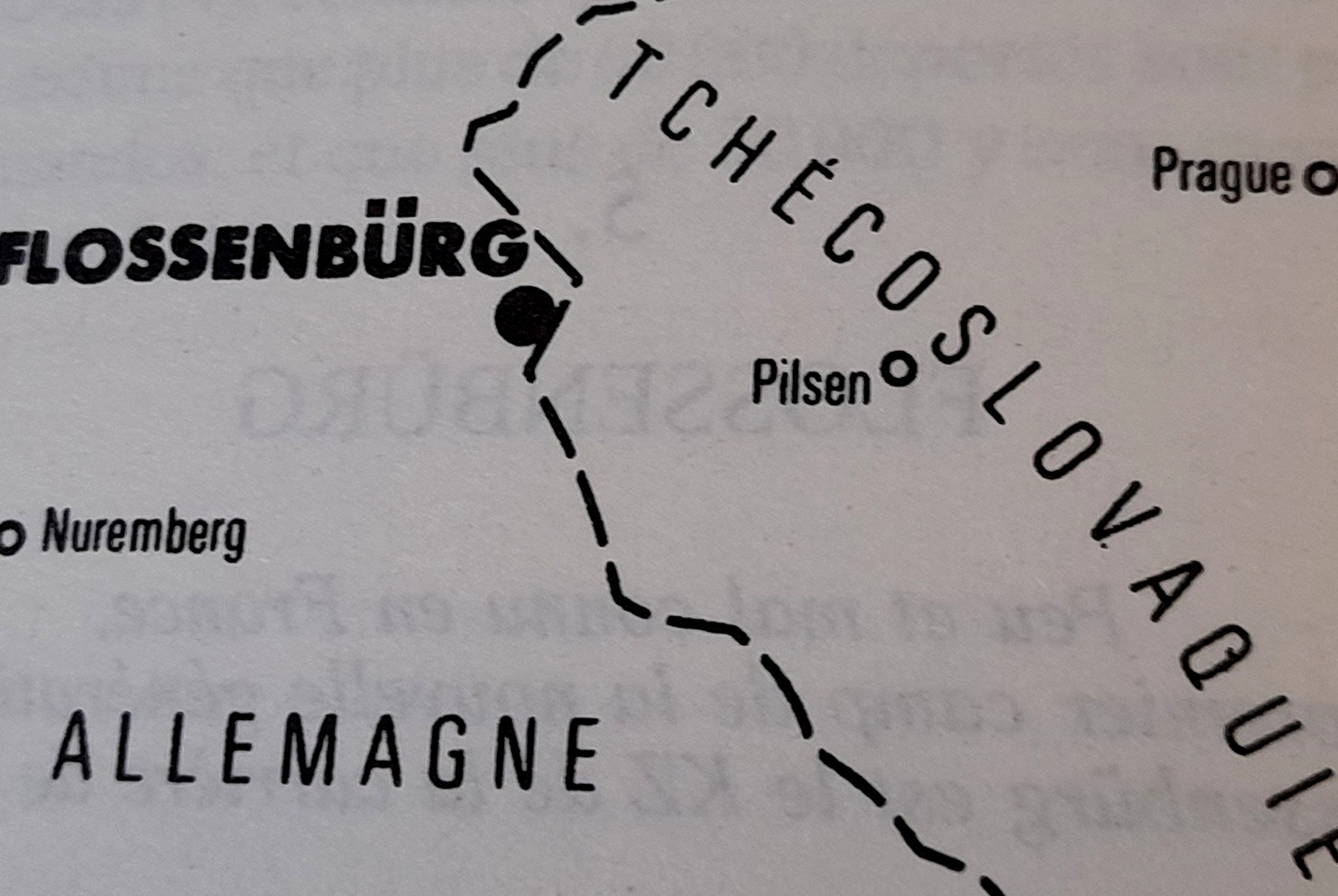
© FNDIRP
Flossenbürg, east of Nuremberg in the Upper Palatinate region of Bavaria, on the Czechoslovakian border, is a small village of fewer than 1,500 inhabitants, 800m above sea level on the edge of a forest, dominated by the ruins of a medieval castle.
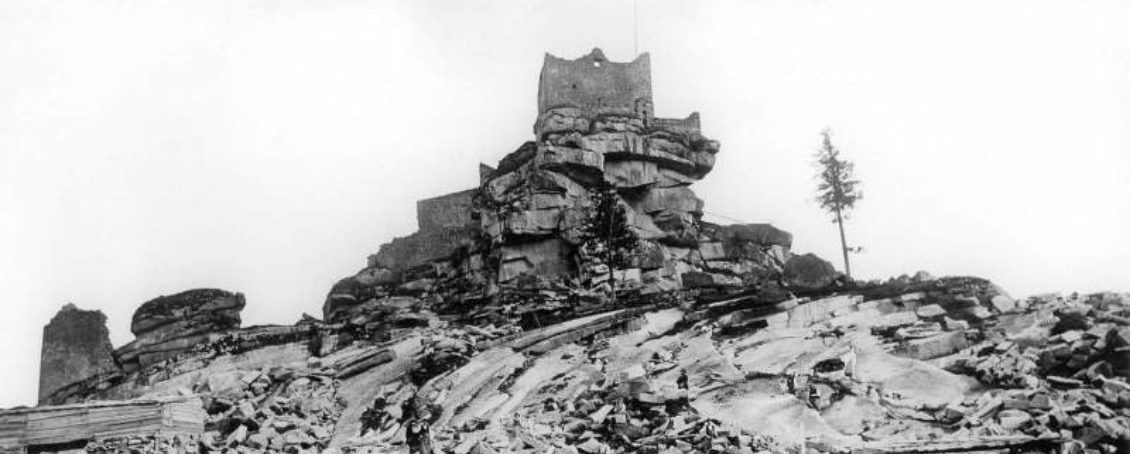
© Gedenkstaette-flossenbuerg.de
The camp was created in May 1938. Its location was justified by the presence of a granite quarry managed by the DESt, an earth and stone company.
Camps were no longer intended solely to intern and terrorize political opponents of National Socialism. The SS also wanted to make an economic profit from the concentration camp workforce. Flossenbürg was of interest to the SS because of its large granite deposits.
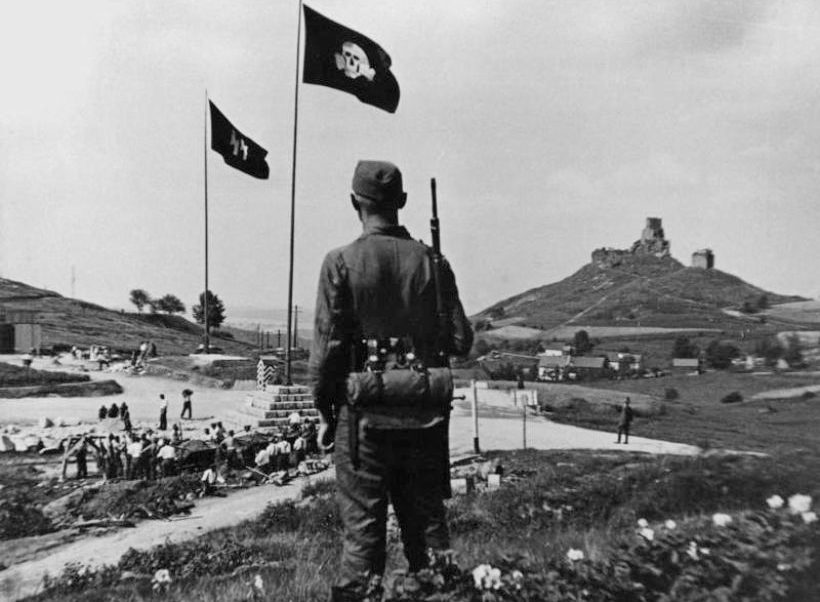
Vue du camp en 1938 © Gedenkstaette-flossenbuerg.de
The inmates
From May 3, 1938, around a hundred inmates from the “green triangles”, transferred from the Dachau camp, began building wooden barracks. They were joined by political prisoners in the “red triangles”, who built the permanent buildings, the entrance gate with its motto “Arbeit macht frei” (“Work makes you free”), the administrative buildings, the kitchens, the laundry and the SS houses. By the end of the year, there were 1,500 inmates.
At first, the Gestapo incarcerated German opponents, then Czechs, Slovenians, Poles, Russian, Belarusian and Ukrainian prisoners of war. The first Jews arrived in 1940.
More than 2,600 prisoners were held at the time. The mortality rate was rising. To get rid of the corpses, the SS had a crematorium built.
Prisoners arrive from all over Europe, having passed through other camps.
More than ¾ of the prisoners are registered in the last year, including thousands of Polish Jews following the evacuation of the Plaszow, Auschwitz and Groß-Rosen camps. Only a few days before the camp is dissolved, thousands of prisoners from the Buchenwald camp reach it after “death marches.
Special prisoners » were incarcerated in this camp (1,500 in the last year), including
– British officers, members of the SOE (Special Operation Executive), parachuted in Normandy
– the German Lutheran pastor Dietrich Bonhoeffer, defender of the Jews, who had given the British evidence of the extermination of the Jews – without being believed by them -, was arrested on 5 April 1943 on charges of « demoralising the troops » (semantic translation of « Zersetzung der Wehrkraft »). He was transferred to the Gestapo prison in Prinz-Albrecht-Strasse and then, in early 1945, to various camps before being locked up in Flossenbürg. There he was hanged on 9 April 1945 along with the conspirators in Operation Walkyrie (the attempted assassination of Adolf Hitler on 20 July 1944), with whom he had been closely associated.
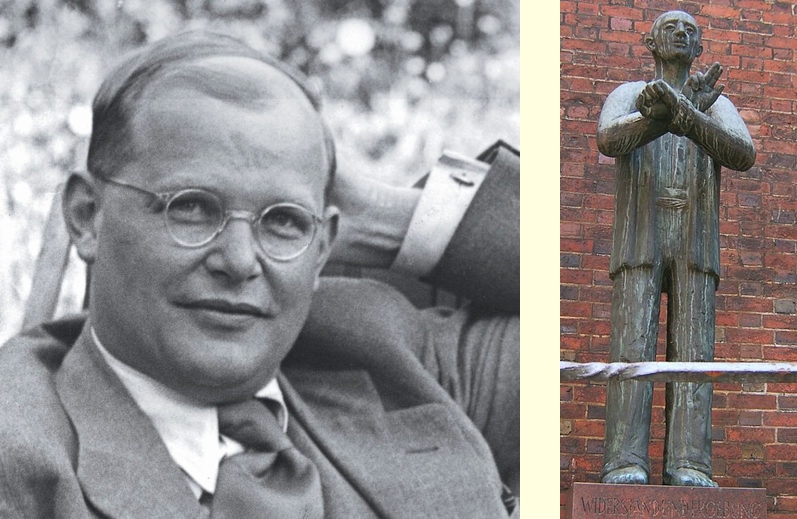
Dietrich Bonhoeffer Statue in Hambourg © DR
As far as the French are concerned, around 5,300, none were deported directly from France to Flossenbürg.
They had all been deported beforehand to either Dachau, Buchenwald, Sachsenhausen or Auschwitz, which explains why this camp is little known in France.
Work
Work From 1938, all prisoners worked in the quarry.
From 1943 onwards, work was redirected towards the war economy.
A Messerschmitt factory (producing Me 109 fighters) was transferred there from Regensburg.
The prisoners’ resistance consisted of sabotaging factory parts.
Evacuation
On April 23, 1945, the 90th American Infantry Division reached Flossenbürg, where only 1,500 sick prisoners remained.
Previously, 40,000 had been evacuated either by train or on the “death marches” to the camps of Dachau, Buchenwald or Sachsenhausen.
5,000 men died along the evacuation routes.
An estimated 115,000 prisoners of 47 nationalities (84,000 men and 16,000 women) were held in Flossenbürg and its 80 kommandos.
70,000 deaths including 4,771 French nationals.
Over the decades, the camp was “forgotten”… All that remained were a few ruins amidst residential dwellings.
In 1995, Germany began construction of a memorial on the camp site, for which the European survivors are vehemently campaigning.
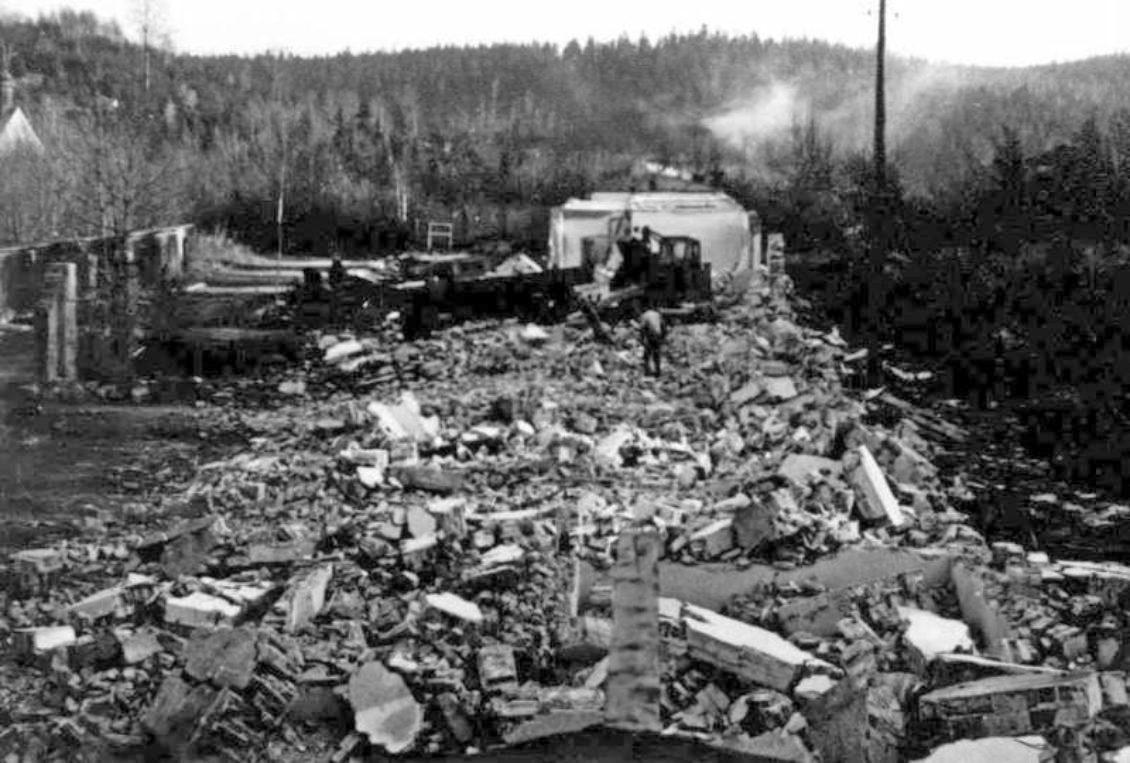
Demolition of the central camp in 1964 © gedenkstaette-flossenbuerg.de
External kommandos
The main camp had around 80 kommandos, opened from 1942 and especially in 1944 to supply the war industry. They were spread from Würzburg to Prague, from Northern Saxony to Lower Bavaria.
The two largest and most murderous kommandos in Nazi Germany were Leitmeritz (Litoměřice) near Theresiendstadt (Terezin) and Hersbruck near Nuremberg :
Leitmeritz
18,400 deportees passed through Leitmeritz.
The first transport of deportees arrived from Dachau in March 1944.
The site was chosen because it had an old limestone quarry and the possibility of building tunnels under a hill (30 km of galleries) to house armaments factories, sheltered from the bombardments.
Huge works were undertaken, including the construction of railways and the supply of water and electricity. A former Czech army barracks nearby housed the SS.
The prisoners produced tank engines for Auto Union (now Audi), rocket parts, molybdenum wire and sheet metal for Osram…
In April 1945, 670 women arrived in Leitmeritz from Ravensbrück and Chemnitz. Russian units liberated the camp on 9 May 1945.
They dismantled the equipment found in the tunnels and took it to the USSR.
18,000 prisoners
4,500 died, decimated by disease (tuberculosis, dysentery, typhus), accidents in the tunnels and » transport » evacuations to Bergen-Belsen.
The mortality rate was so high that a crematorium had to be built in April 1945.
Hersbruck
Hersbruck, located in Bavaria near Nuremberg, was the second largest kommando in Flossenbürg. The first deportees arrived in May 1944 to build railway lines, dig tunnels, fit out the galleries, produce these aircraft engines and work in the Siemens, AEG and Volkswagen factories.
A crematorium was built.
10,000 deported
4,000 dead
In May 1945, the SS evacuated 1,600 patients by train and 3,800 on foot to Dachau.
More than 600 died on this « death march ».
Two kommandos, mainly made up of women transferred from the Ravensbrück camp, were located in Bohemia :
Zwodau (Svatava)
Nearly 3,000 women from Germany, France, Poland, Romania and Yugoslavia, and 100 Hungarian Jews; in 12-hour night shifts and 12-hour day shifts, they mass-produced machining coils, switches and measuring devices for the aviation industry for the Siemens company, which achieved huge increases in turnover!
Around 20 April 1945, the survivors were put on the road towards Tachau near Karlsberg. After 3 days’ marching, the SS turned the column around. On their return, the deportees found the made-up traces of the destroyed camp, where they were liberated by the Americans on 7 May 1945.
Holleischen (Holysov)
From August 1944 to early 1945, the number of women was 600, 50% of whom were French, followed each time by 1/4 Poles and Russians. On 6 March 1945, 143 Jewish Hungarians arrived from the Siemens-Schukert factory kommando outside Nüremberg, followed by 259 inmates from the disbanded kommandos in the same region.
The women were used as labour to work in arms factories. At the same time, around 200 inmates from the men’s camp were assigned to building a shooting range.
Hélène Lignier, Noémie Suchet and Simone Michel-Levy, French Resistance fighters, accused of sabotage, were caned 25 times in spring 1945. Transferred to the main camp at Flossenbürg, they were hanged on 13 April 1945. Simone Michel-Levy was made a Companion of the Liberation in September 1945.
The Holy Cross Brigade (Polish partisans) liberated them on 5 May 1945.
Two days later, the prisoners were taken over by the American army.
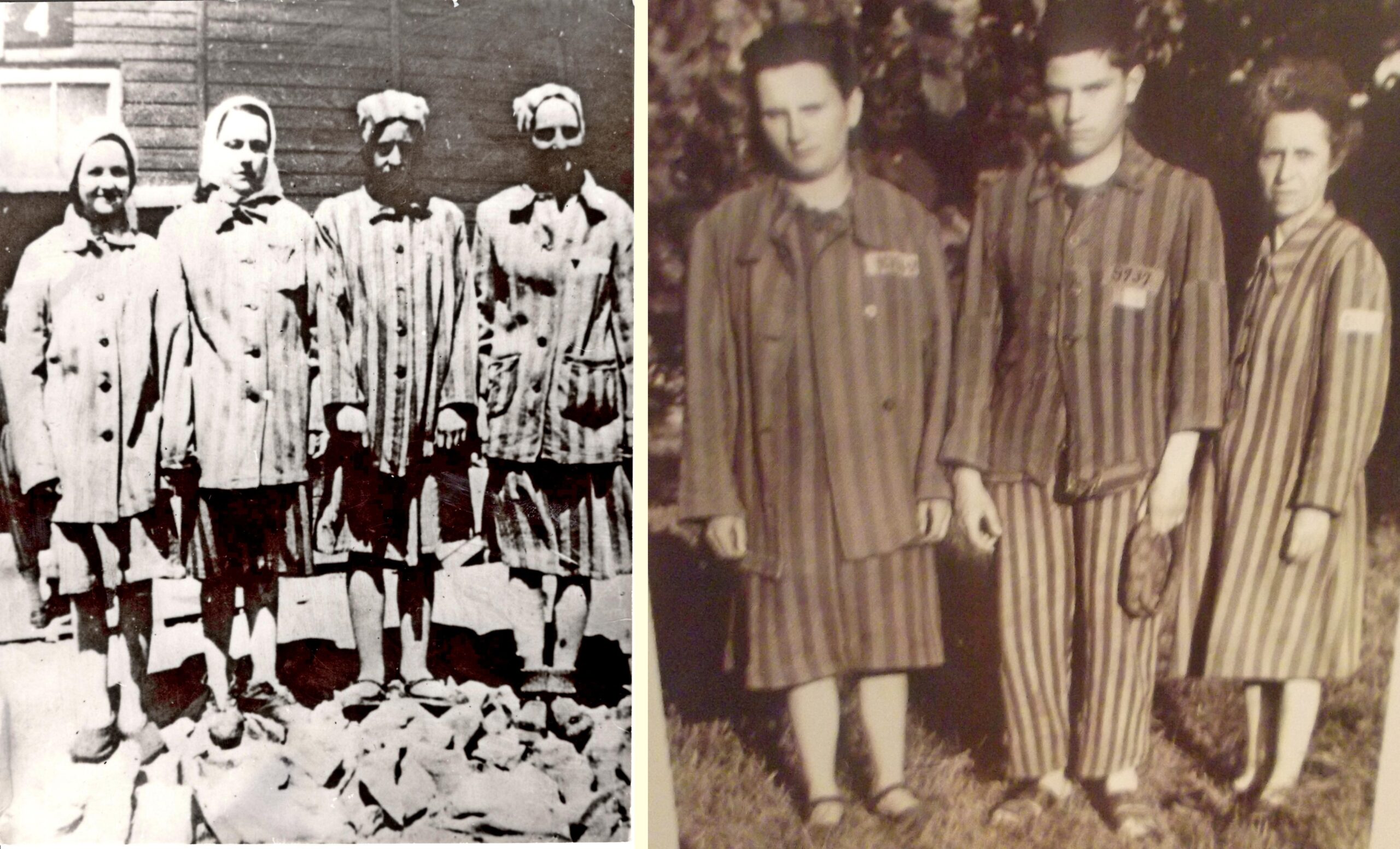
Release of French women and men in Zwodau (left) and in Holleischen (right)
Photos taken by the liberating soldiers © Archives Breton/Marchelidon
Sources
– https://www.gedenkstaette-flossenbuerg.de
– Catalogue tiré de l’exposition : Camp de concentration de Flossenbürg 1938-1945, éd. KZ – Gedenkstäte Flossenbürg
– Association (française) des Déportés et familles de disparus du camp de concentration de Flossenbürg & Kommandos : https://asso-flossenburg.com
– Fondation de la Mémoire de la Déportation, revue Mémoire vivante, n°36, 2003
– https://fondationmemoiredeportation.com
– http://www.bddm.org/aud/camps.php?id=Flossenbürg, Hersbruck
– https://en.wikipedia.org/wiki/Leitmeritz_concentration_camp
– RUBY, Marcel, Le Livre de la Déportation, éd. Robert Laffont, Paris, 1995
Flossenbürg
Opening : may 1938

© Vincent Gerbet
Monument description
The monument was inaugurated on October 8, 1988: its base consists of a granite stele extracted from the camp quarry, laid vertically.
At the bottom of the stele, the steps of the staircase leading to the quarry are outlined.
At the top, in red granite, the triangle of political deportees with the letter F for French. At the foot, a few chaotically placed, barely cut blocks also come from the quarry.
The monument reveals the Amicale de Flossenbürg’s concern for education, with its simple design and a map showing the location of the camp. Today, however, the acronyms FRG (Federal Republic of Germany) and GDR (German Democratic Republic) are obsolete, following the fall of the Berlin Wall on November 9, 1989 and the unification treaty signed in Berlin on August 31, 1990.
On the column is engraved:
To the deportees from the
FLOSSENBÜRG CONCENTRATION CAMP
And its 95 kommandos
A plaque locates the Flossenbürg camp geographically. Below it is engraved :
Inside this stele, made of granite from the camp quarry,
is an urn containing ashes collected from the Flossenbürg crematorium,
liberated by the 3rd US Army on April 23, 1945
On the left-hand side of the column is the red triangle and is inscribed :
1945-1995
KZ Flossenbürg
50 Jahrestag der Befreiung (50e anniversaire de la libération)
In Erhfurcht vor den Opfern (en hommage aux victimes)
Gemeinde Flossenbürg (la commune de Flossenbürg)
Flossenbürg camp

© FNDIRP
Flossenbürg, east of Nuremberg in the Upper Palatinate region of Bavaria, on the Czechoslovakian border, is a small village of fewer than 1,500 inhabitants, 800m above sea level on the edge of a forest, dominated by the ruins of a medieval castle.

© Gedenkstaette-flossenbuerg.de
The camp was created in May 1938. Its location was justified by the presence of a granite quarry managed by the DESt, an earth and stone company.
Camps were no longer intended solely to intern and terrorize political opponents of National Socialism. The SS also wanted to make an economic profit from the concentration camp workforce. Flossenbürg was of interest to the SS because of its large granite deposits.

Vue du camp en 1938 © Gedenkstaette-flossenbuerg.de
The inmates
From May 3, 1938, around a hundred inmates from the “green triangles”, transferred from the Dachau camp, began building wooden barracks. They were joined by political prisoners in the “red triangles”, who built the permanent buildings, the entrance gate with its motto “Arbeit macht frei” (“Work makes you free”), the administrative buildings, the kitchens, the laundry and the SS houses. By the end of the year, there were 1,500 inmates.
At first, the Gestapo incarcerated German opponents, then Czechs, Slovenians, Poles, Russian, Belarusian and Ukrainian prisoners of war. The first Jews arrived in 1940.
More than 2,600 prisoners were held at the time. The mortality rate was rising. To get rid of the corpses, the SS had a crematorium built.
Prisoners arrive from all over Europe, having passed through other camps.
More than ¾ of the prisoners are registered in the last year, including thousands of Polish Jews following the evacuation of the Plaszow, Auschwitz and Groß-Rosen camps. Only a few days before the camp is dissolved, thousands of prisoners from the Buchenwald camp reach it after “death marches.
Special prisoners » were incarcerated in this camp (1,500 in the last year), including
– British officers, members of the SOE (Special Operation Executive), parachuted in Normandy
– the German Lutheran pastor Dietrich Bonhoeffer, defender of the Jews, who had given the British evidence of the extermination of the Jews – without being believed by them -, was arrested on 5 April 1943 on charges of « demoralising the troops » (semantic translation of « Zersetzung der Wehrkraft »). He was transferred to the Gestapo prison in Prinz-Albrecht-Strasse and then, in early 1945, to various camps before being locked up in Flossenbürg. There he was hanged on 9 April 1945 along with the conspirators in Operation Walkyrie (the attempted assassination of Adolf Hitler on 20 July 1944), with whom he had been closely associated.

Dietrich Bonhoeffer Statue in Hambourg © DR
As far as the French are concerned, around 5,300, none were deported directly from France to Flossenbürg.
They had all been deported beforehand to either Dachau, Buchenwald, Sachsenhausen or Auschwitz, which explains why this camp is little known in France.
Work
Work From 1938, all prisoners worked in the quarry.
From 1943 onwards, work was redirected towards the war economy.
A Messerschmitt factory (producing Me 109 fighters) was transferred there from Regensburg.
The prisoners’ resistance consisted of sabotaging factory parts.
Evacuation
On April 23, 1945, the 90th American Infantry Division reached Flossenbürg, where only 1,500 sick prisoners remained.
Previously, 40,000 had been evacuated either by train or on the “death marches” to the camps of Dachau, Buchenwald or Sachsenhausen.
5,000 men died along the evacuation routes.
An estimated 115,000 prisoners of 47 nationalities (84,000 men and 16,000 women) were held in Flossenbürg and its 80 kommandos.
70,000 deaths including 4,771 French nationals.
Over the decades, the camp was “forgotten”… All that remained were a few ruins amidst residential dwellings.
In 1995, Germany began construction of a memorial on the camp site, for which the European survivors are vehemently campaigning.

Demolition of the central camp in 1964 © gedenkstaette-flossenbuerg.de
External kommandos
The main camp had around 80 kommandos, opened from 1942 and especially in 1944 to supply the war industry. They were spread from Würzburg to Prague, from Northern Saxony to Lower Bavaria.
The two largest and most murderous kommandos in Nazi Germany were Leitmeritz (Litoměřice) near Theresiendstadt (Terezin) and Hersbruck near Nuremberg :
Leitmeritz
18,400 deportees passed through Leitmeritz.
The first transport of deportees arrived from Dachau in March 1944.
The site was chosen because it had an old limestone quarry and the possibility of building tunnels under a hill (30 km of galleries) to house armaments factories, sheltered from the bombardments.
Huge works were undertaken, including the construction of railways and the supply of water and electricity. A former Czech army barracks nearby housed the SS.
The prisoners produced tank engines for Auto Union (now Audi), rocket parts, molybdenum wire and sheet metal for Osram…
In April 1945, 670 women arrived in Leitmeritz from Ravensbrück and Chemnitz. Russian units liberated the camp on 9 May 1945.
They dismantled the equipment found in the tunnels and took it to the USSR.
18,000 prisoners
4,500 died, decimated by disease (tuberculosis, dysentery, typhus), accidents in the tunnels and » transport » evacuations to Bergen-Belsen.
The mortality rate was so high that a crematorium had to be built in April 1945.
Hersbruck
Hersbruck, located in Bavaria near Nuremberg, was the second largest kommando in Flossenbürg. The first deportees arrived in May 1944 to build railway lines, dig tunnels, fit out the galleries, produce these aircraft engines and work in the Siemens, AEG and Volkswagen factories.
A crematorium was built.
10,000 deported
4,000 dead
In May 1945, the SS evacuated 1,600 patients by train and 3,800 on foot to Dachau.
More than 600 died on this « death march ».
Two kommandos, mainly made up of women transferred from the Ravensbrück camp, were located in Bohemia :
Zwodau (Svatava)
Nearly 3,000 women from Germany, France, Poland, Romania and Yugoslavia, and 100 Hungarian Jews; in 12-hour night shifts and 12-hour day shifts, they mass-produced machining coils, switches and measuring devices for the aviation industry for the Siemens company, which achieved huge increases in turnover!
Around 20 April 1945, the survivors were put on the road towards Tachau near Karlsberg. After 3 days’ marching, the SS turned the column around. On their return, the deportees found the made-up traces of the destroyed camp, where they were liberated by the Americans on 7 May 1945.
Holleischen (Holysov)
From August 1944 to early 1945, the number of women was 600, 50% of whom were French, followed each time by 1/4 Poles and Russians. On 6 March 1945, 143 Jewish Hungarians arrived from the Siemens-Schukert factory kommando outside Nüremberg, followed by 259 inmates from the disbanded kommandos in the same region.
The women were used as labour to work in arms factories. At the same time, around 200 inmates from the men’s camp were assigned to building a shooting range.
Hélène Lignier, Noémie Suchet and Simone Michel-Levy, French Resistance fighters, accused of sabotage, were caned 25 times in spring 1945. Transferred to the main camp at Flossenbürg, they were hanged on 13 April 1945. Simone Michel-Levy was made a Companion of the Liberation in September 1945.
The Holy Cross Brigade (Polish partisans) liberated them on 5 May 1945.
Two days later, the prisoners were taken over by the American army.

Release of French women and men in Zwodau (left) and in Holleischen (right)
Photos taken by the liberating soldiers © Archives Breton/Marchelidon
Sources
– https://www.gedenkstaette-flossenbuerg.de
– Catalogue tiré de l’exposition : Camp de concentration de Flossenbürg 1938-1945, éd. KZ – Gedenkstäte Flossenbürg
– Association (française) des Déportés et familles de disparus du camp de concentration de Flossenbürg & Kommandos : https://asso-flossenburg.com
– Fondation de la Mémoire de la Déportation, revue Mémoire vivante, n°36, 2003
– https://fondationmemoiredeportation.com
– http://www.bddm.org/aud/camps.php?id=Flossenbürg, Hersbruck
– https://en.wikipedia.org/wiki/Leitmeritz_concentration_camp
– RUBY, Marcel, Le Livre de la Déportation, éd. Robert Laffont, Paris, 1995
Délégation de Paris des Amis de la Fondation
pour la Mémoire de la Déportation
31 Boulevard Saint-Germain 75005 Paris
Contact : afmd.dt75@gmail.com
©AFMD75




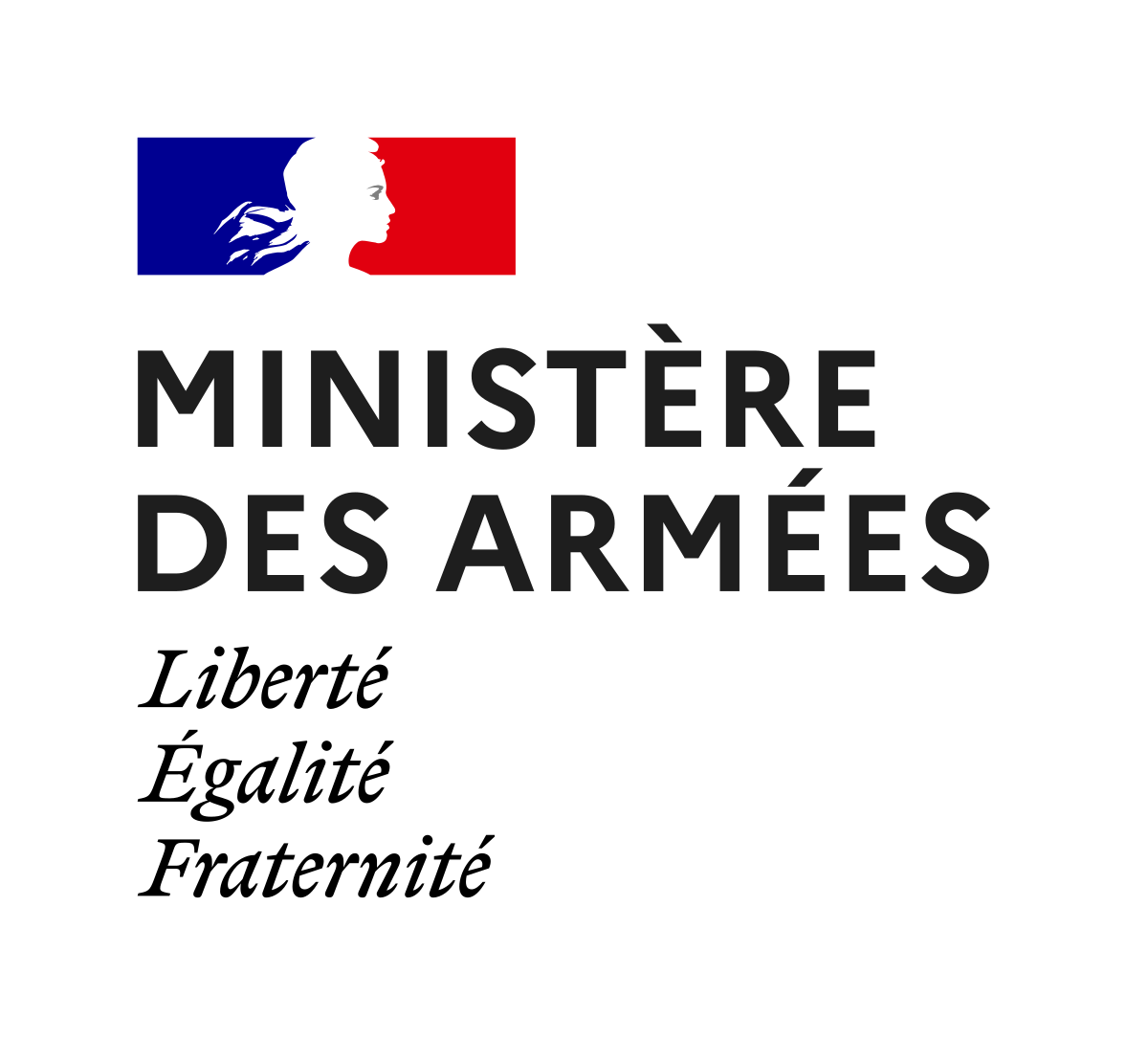
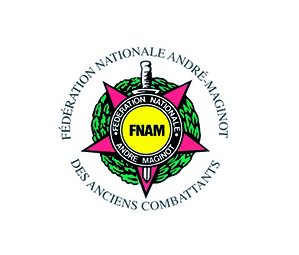
Délégation de Paris
des Amis de la Fondation
pour la Mémoire de la Déportation
31 Boulevard Saint-Germain
75005 Paris
Contact :
afmd75@gmail.com
©AFMD75
Délégation de Paris
des Amis de la Fondation
pour la Mémoire
de la Déportation
31 Boulevard Saint-Germain
75005 Paris
Contact
afmd75@gmail.com
©AFMD75



